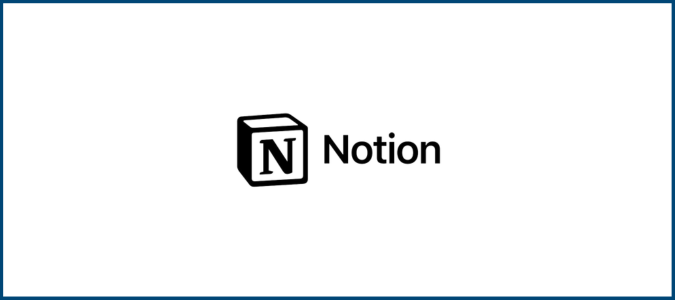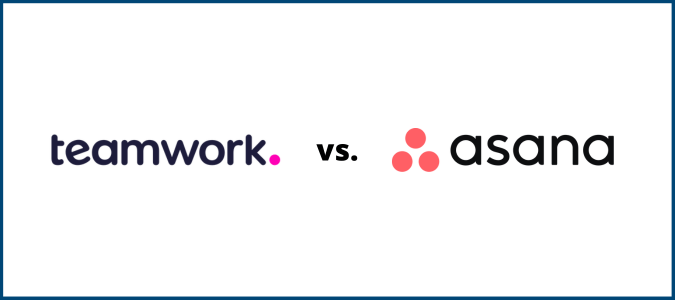Notion and Asana are project management tools that offer a powerful range of features and come with affordable pricing for individual users and teams.
Notion was originally a note-taking app but has since grown into an all-in-one workspace platform that lets users manage content, projects, teams, and client work from a central location. Because of its flexibility and clean interface, Notion is extremely popular for small teams managing client projects and bigger teams that need to share extensive documentation and project assets internally. You can get started with Notion for free.
Asana is one of the world’s leading productivity and planning tools. It helps large and small teams manage projects through powerful automations and intuitive project planning features. Asana is one of the easiest tools for new users to get started with and prioritizes simplicity and efficiency in its interface. Asana has a free plan you can try out that includes many of its best features.

Notion and Asana Compared to the Best Project Management Software
Below you’ll find our Golden Eggs, our top picks from our post reviewing all the best project management software on the market. While Asana and Notion are fantastic options for a lot of people, your specific needs will dictate which option is a better fit for your team.
Monday.com is one of the easiest project management software tools to learn and implement but doesn’t skimp on powerful benefits like automation and a built-in CRM. Try out any Monday.com plan today for free.
ClickUp is specifically designed for remote workers and teams with its customizable interface and plentiful collaboration features. Start using this platform for as little as $7 per user.
Smartsheet is designed for people who want a project management tool to handle large amounts of data, similar to Excel but with more modern PM features. Try it out on a generous 30-day trial period.

Notion Compared to Asana
Both Asana and Notion are great tools for project management. But, each one tends to be better for specific use cases and project types. Let’s look at a quick view of what each one specializes in and who should use it.
Notion Highlights
Notion has one main product: the Notion project management (PM) software. Labeling itself as an all-in-one workspace, it offers users a range of features that help with basic project management, including note-taking tools, the ability to create internal wikis, and collaboration tools. You’ll also get tools modern project managers have come to expect, like dashboards, file sharing, external user views, and budgeting and time tracking.
Notion’s note-taking features can be used for keeping track of tasks within smaller teams and for individuals, while the wiki feature lets large teams create detailed internal processes and documentation for things like onboarding, customer information, and SOPs. This versatility shows that Notion has grown beyond its humble origins as a feature-rich version of a to-do list.
Notion also lets users create budgets, assign tasks, build databases, and manage workflow via timelines, Kanban boards, or calendars. All of the software’s project views are highly customizable, allowing your team to visualize tasks and deadlines in a way that fits your workflows.
Asana Highlights
Asana has been a top brand in the software management space for a while, specifically for its beginner-friendly yet powerful interface. The main goal of Asana is to make any project easier and more streamlined for users to manage, which shows in the platform’s range of automation features and integrations with other software.
Like Notion, Asana’s PM platform is the company’s sole product. But its software can be applied to many different industries and use cases that utilize Agile project management. Asana has a great dashboard that can be deployed to view single projects or entire portfolios, so more complex sectors like software development or strategic planning can be satisfied that Asana is powerful enough to support the detailed task breakdowns they require.
Asana also focuses on making communication easy, with an internal chat feature and lots of collaboration tools like task assignments, comments, and status updates, making it a great tool for teams. This, added to the fact that Asana has a powerful range of templates, make it one of the most straightforward project management tools for big and small teams to adapt to quickly.
Notion vs. Asana: Pros and Cons
Notion and Asana are both popular, easy to use, and affordable solutions for project management. However, there are some key differences between them in terms of where they excel and where they fall short. Let’s break down the main strengths and weaknesses of each platform, side by side.
Where Notion Shines
Project elements: Notion lets you create the elements you need to organize project work. Create lists, galleries, charts, graphs, budgets, and boards to set everything up for success. You can also edit and share project assets by sharing files in comments and embedding videos into tasks. Even with all these elements that users can utilize, Notion is still easy to navigate and find what you’re looking for.

Collaboration: From being able to leave comments and attachments on any task to building shared wikis for setting company policies and processes, it’s easy for teams to collaborate within Notion. And the software syncs easily with Slack, Zoom, and Google Drive to make it even easier to work together. You can also set guest permissions within Notion, so freelancers and clients can be looped in on tasks, progress, or reports.
Internal documentation: Notion’s handy wiki feature is a standout, designed to help teams create detailed content archives and resources that can be accessed easily from Notion’s sidebar. Use them for organizational SOPs, process documentation, a repository for key documents like offer letters and statements of work, or just about anything else. Notion makes it easy to build these to be comprehensive without being hard to read or difficult to navigate, so users can share information efficiently.

Friendly UI: While Notion may be especially good for creating task lists and managing documentation, it’s just as capable as other project management tools when it comes to useful views like calendars, timelines, boards, and galleries. Moreover, Notion makes it a breeze to tweak them to display exactly what you need. Users can add content or building blocks to any of these views, making them contain all the crucial information while not losing any ease of navigation.
Templates: Notion offers community templates created by other teams in your industry. This opens the doors to implementing really specific, pre-made project workflows and breakdowns quickly into your instance of Notion. Plus, Notion’s own templates are detailed and visually a lot more impressive and usable than many other project management software options.
Where Notion Needs Improvement
Goal tracking: Lots of other project management platforms let users set milestones and other checkpoints within a larger project and track their progress, but Notion doesn’t have a wide range of features for this. That means it will fall short for many teams who adhere strongly to the principles of Agile project management. Although Notion does have roadmaps, they’re pretty basic, leaving users to create their own goal-tracking systems in the platform.
Customization overwhelm: While we love the flexibility and overall interface you get with Notion, there is still risk. With so many options for customizing the look, feel, and included elements within a dashboard or project view, information can quickly pile up on the interface, becoming dense and confusing. It’s good to practice some restraint here so that your team doesn’t get overwhelmed by what is meant to be a simplified project view and UI.
Where Asana Shines
Automations: If there’s one thing that Asana is good at, it’s automating your day-to-day (and even more unique) actions. Set triggers that execute a set of actions based on changes to data, notifications, outcomes, or times. Plus, Asana’s rule-based builder helps anyone on your team set up an automated sequence to help streamline work, such as handoffs that take place automatically after a task changes status or is marked as complete.

Teamwork: Asana was designed to improve internal collaboration and streamline communication. And it excels in both regards. Not only does Asana have a really cool internal chat feature, but it also has built-in feedback tools like comments, likes, and approvals. A workload management tool also helps managers assess how much more work someone can take on and split workloads between team members when it gets too high.
Easy to get the hang of: Asana is a more capable, complex tool than Notion, but that doesn’t prevent it from being easy for novices to use out of the box. Interfaces start with a clean list view of tasks with connections to other boards or dependencies clearly marked. Users entering the software for the first time are greeted with pop-up tips for various tools and features, and there are a ton of video guides and tutorials embedded in the sidebar menu to learn anything else that the software can do.
Agile project management: Asana users can view projects in Kanban board format, but this software really supports Agile elements in a way that Notion can’t come close to. Asana focuses on helping teams visualize projects and meet goals, with features for sprint planning, bug tracking, and roadmaps ready to use from the moment you first sign up. You can set milestones and subtasks to break projects down into a more digestible format and so much more to support your preferred PM methodology.

Integrations: Asana has a huge range of integrations available, running the gamut from the usual suspects (Microsoft 365, Google’s suite of tools, Slack, and Zoom) to unique other platforms. Connect it with Canva or Adobe Creative Cloud to create beautiful project assets in sync, use it with Jira for software development or ServiceNow for IT efforts, or tap into Asana’s native Salesforce integration to make your selling efforts sing. And that’s just scratching the surface. While Notion does have some integrations, it’s nowhere near the size of Asana’s library.
Where Asana Needs Improvement
Task assignment: One major stumbling block for Asana is tasks that need to be tag-teamed by multiple members of your team. Unfortunately, tasks can only be assigned to one user. For a tool that focuses so much on streamlining tasks and projects, this can be detrimental to project visibility and slow down progress by requiring extra handoffs and check-ins to ensure everyone involved gets their work done. This can lead to needing to create multiple redundant tasks for each responsible party, which can get confusing and messy in the dashboard.
Centralized documentation: Although Asana has a huge range of features, including a good file-sharing feature, it’s not easy to do what Notion does so well—create databases of documentation for internal use. While Asana has plenty of integrations to help with this (such as Confluence, a platform designed for creating documentation repositories), it’s not going to be convenient for an organization that has SOP building or contract creation constantly on their plate.
The Last Word on Notion Compared to Asana
Notion and Asana are both solid options for basic project management, and each has a lane where they really excel. You can get PM essentials at an affordable price point with ample features for managing multiple projects at the same time and team collaboration.
Notion is great at many of the little things, but it’s unrivaled in terms of integrated internal document housing. You can build team wikis that house SOPs, internal policies, and even frequently needed docs like contracts, statements of work, and onboarding materials. Meanwhile, Asana really shines in terms of its deep roster of integrations and building automations to streamline everyday work. Asana’s UI is a bit cleaner than Notion’s, with more views and built-in features that cater to Agile project management.
We recommend Asana in general over Notion, except when prioritizing document and requirements management. But, if you’d like to explore all of your project management software options, don’t forget to read our full post reviewing the best project management software, with information on what each platform excels at.















